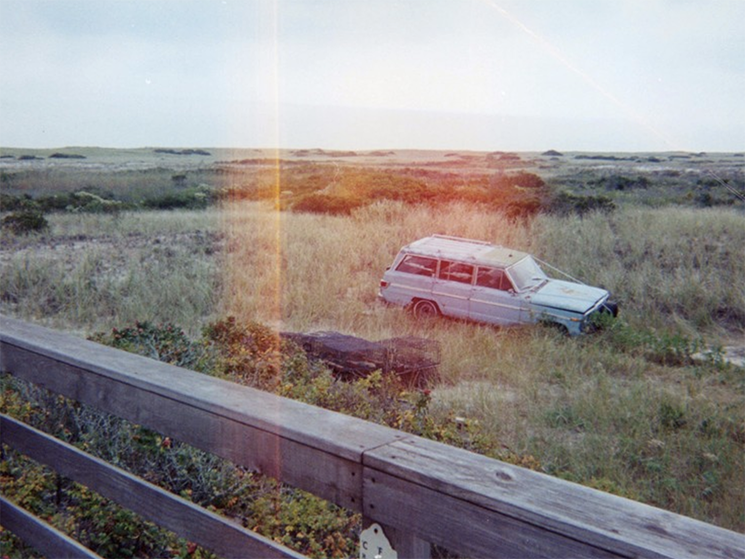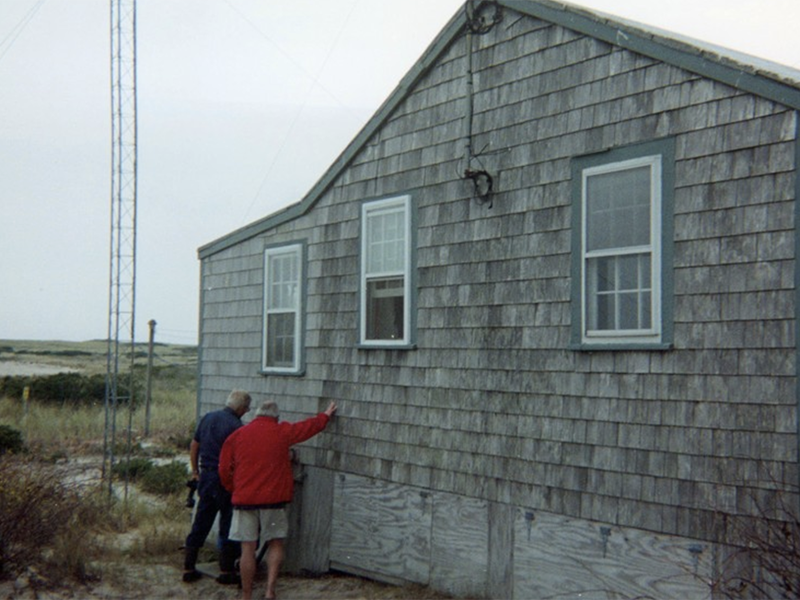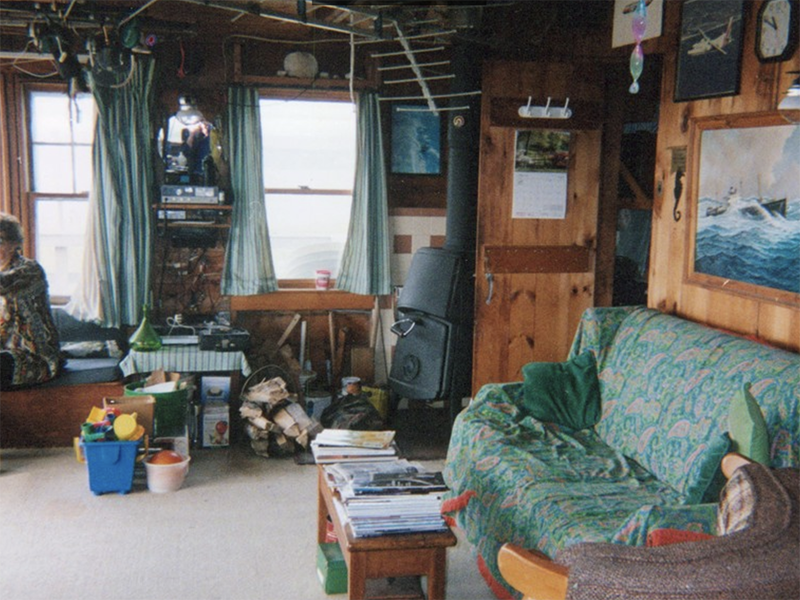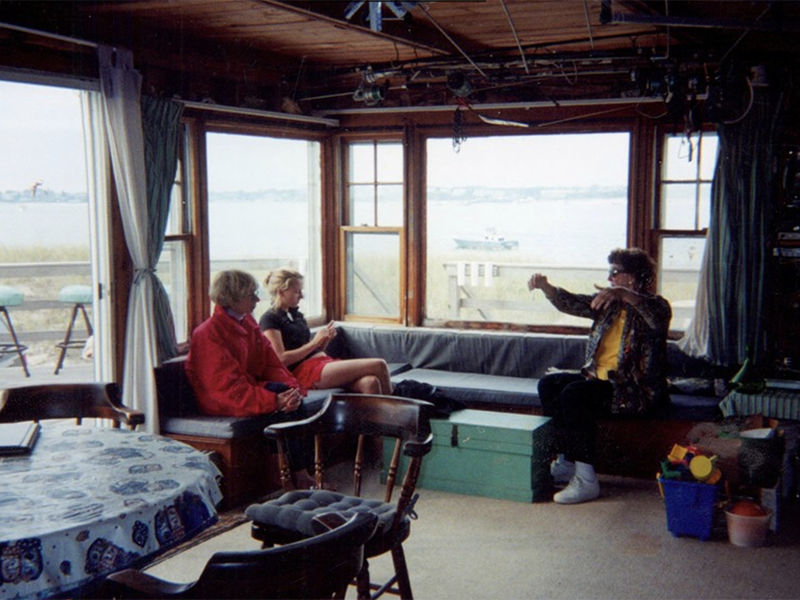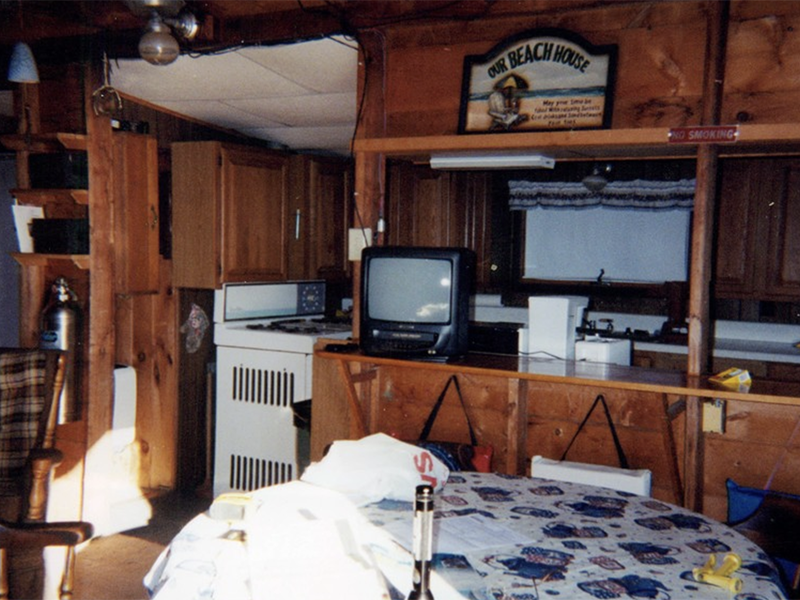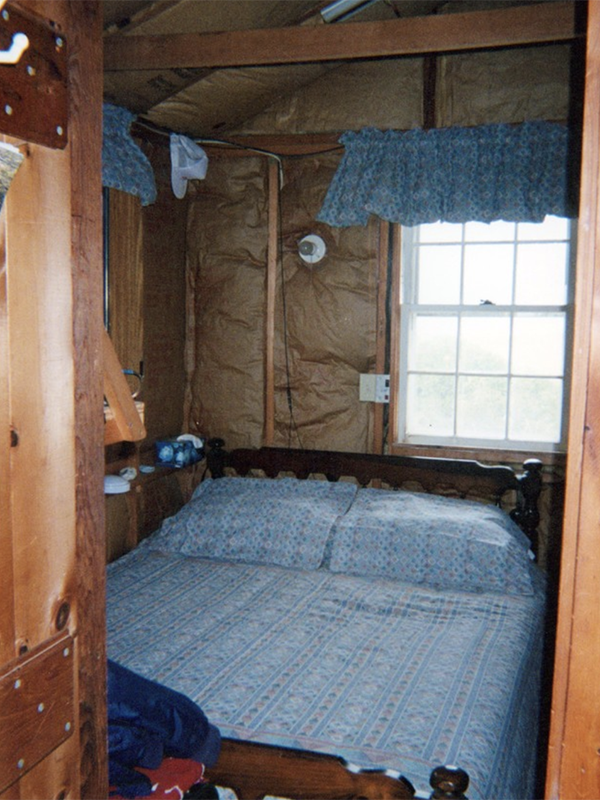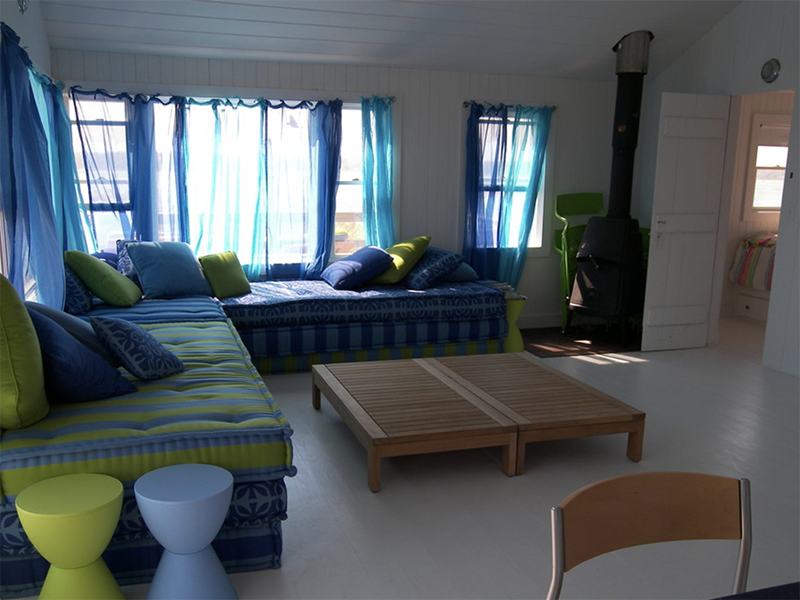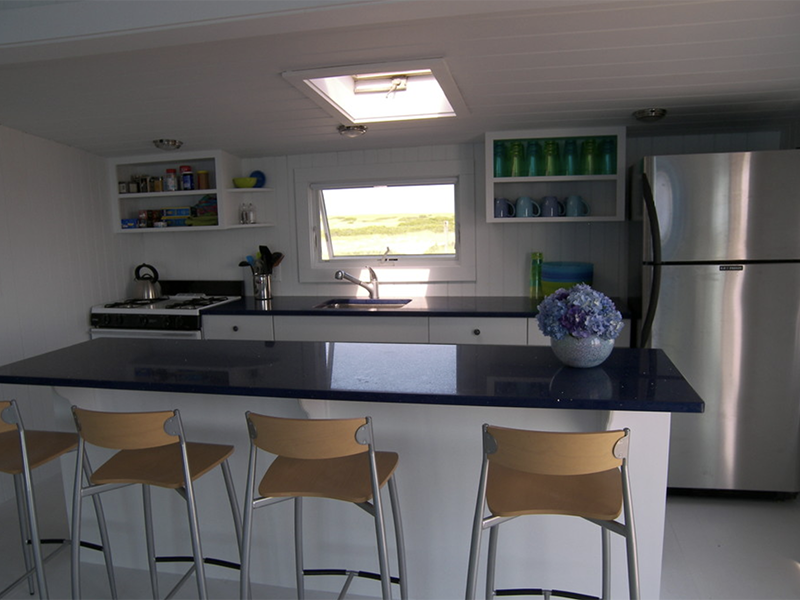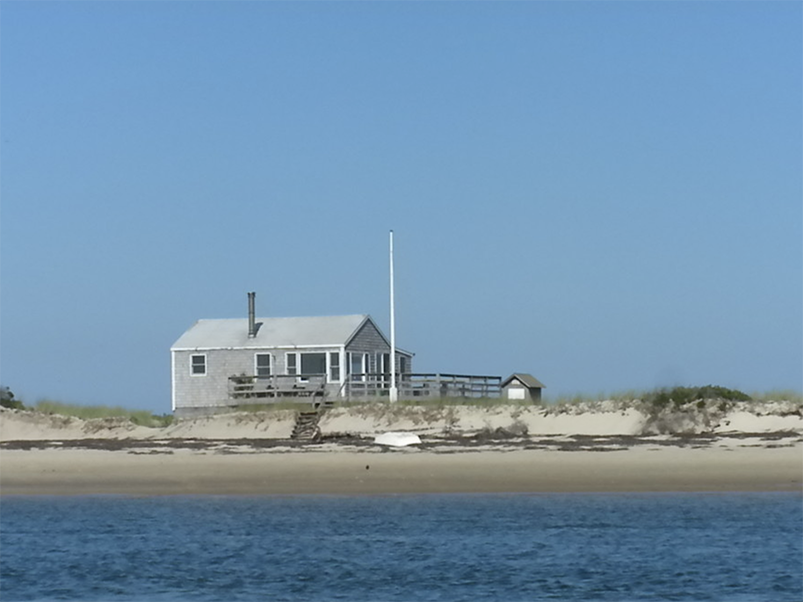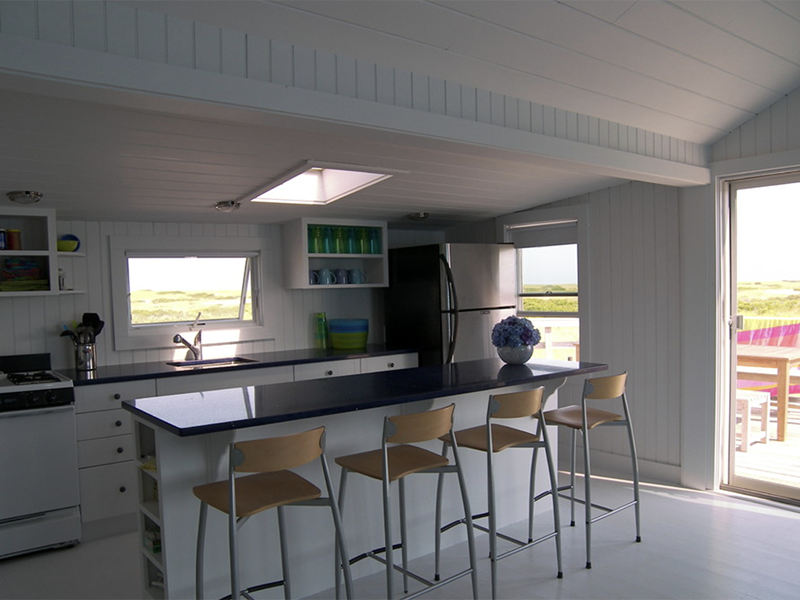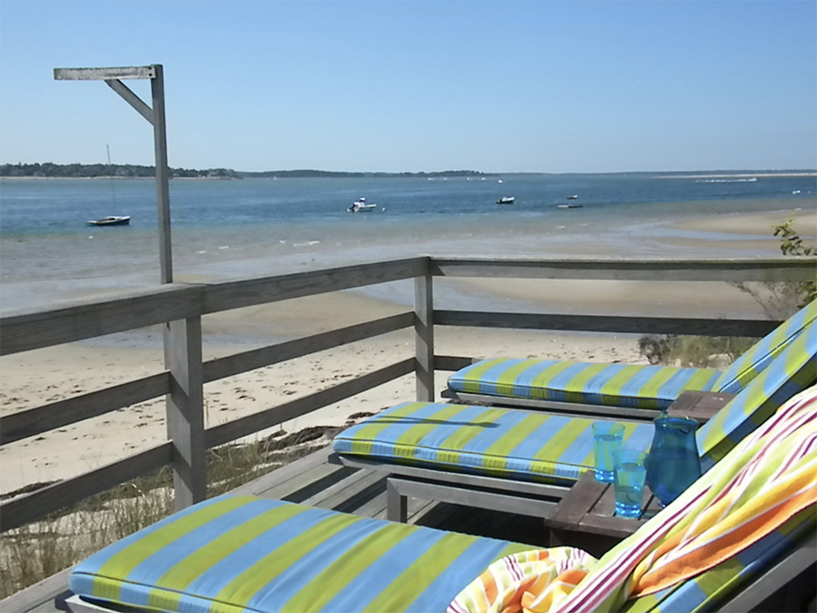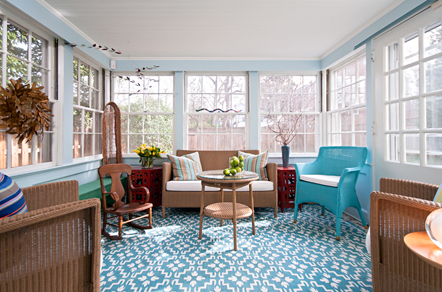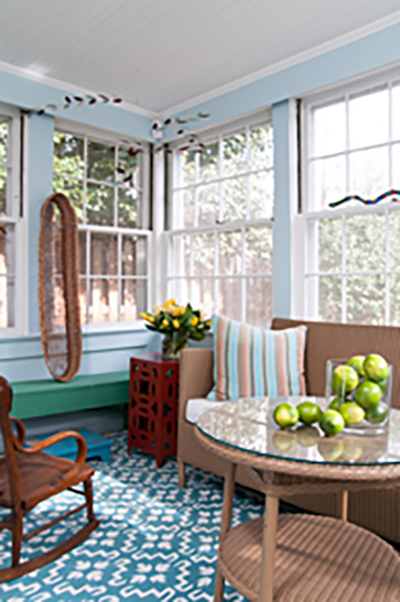Fisherman's Shack
A Cape Cod institution becomes a livable, lovable summer getawayOnce connected to a beach in Cape Cod, the little dune shack was used for decades by fisherman and families, who often occupied it all summer long. Over the years, through various storms, it had become only accessible by boat. More like a hunting cabin in the woods, it was dark and grimy from years of use and smoke from a potbellied stove. Weathered and grey-shingled, the low ceilings resist the sea winds. Seaweed stuffed between layers of paper served as bits of insulation, and mortar made of burned shells filled the chinks around windowsills. Built strictly for fishermen and bird hunters, in recent years the tiny Cape Cod fishing shacks have become coveted as rustic getaways.
That was the challenge: The new owners wanted to turn the two-bedroom and living room fishing shack into a bright and airy destination for family and friends of all ages.
BEFORE
